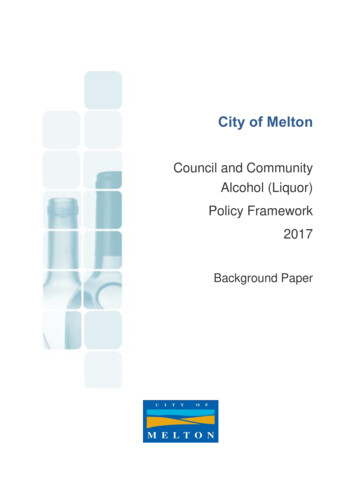
Transcription
City of MeltonCouncil and CommunityAlcohol (Liquor)Policy Framework2017Background Paper
PrefaceThis background paper to the City of Melton’s Council and Community Alcohol (Liquor)Policy Framework aims to canvass the diverse range of influences impacting on Council’salcohol policy and planning considerations. It explores Council’s various planning anddecision-making roles in relation to alcohol, in the context of other roles and responsibilitiesin the community.This paper has drawn on VicHealth’s Alcohol Cultures Framework to help embed preventionapproaches and recommends ways to achieve better planning and design outcomes. Theaim is to reduce alcohol-related harm, improve community health, safety and amenity andpromote the responsible service of alcohol, while supporting the success of local businessesand events.The Victorian Liquor Control Reform Act 1998 establishes the definition for liquor as follows:‘liquor means a beverage, or other prescribed substance, intended for human consumptionwith an alcoholic content greater than 0.5% by volume at a temperature of 20 Celsius (s 3).In all documents forming part of this Framework, the terms alcohol and liquor are referred tointerchangeably, while other frequently used terms are explained within their relevantcontext.This discussion is written with the reader in mind and we appreciate your valuable feedbackand assistance in delivering a valuable resource for the City of Melton community.EnquiriesSocial Planning and WellbeingMelton City CouncilP: 07 9747 7200A: PO Box 21, Melton VIC 3337W: www.melton.vic.gov.auDate: December 2017Document Name: Melton Council and Community Alcohol (Liquor) Policy Framework:Background PaperVersion: Final 0.1
Table of Contents1.Executive summary. 12.Introduction . 2Purpose . 2What’s different in this new Framework? . 2The Policy . 3The Guidance Notes . 33.Key Influences . 4VicHealth’s Alcohol Cultures Framework . 4Land Use Planning - Melton Planning Scheme . 4Liquor licensing . 5Liquor licences in the City of Melton . 64.Alcohol . 8A legal, but regulated substance. 8What is alcohol and what does it do? . 8Risks of alcohol related injury on a single occasion. 10Lifetime risk of alcohol-related harm, cumulative and over time . 11Does where and how we live make a difference?. 11The particular risks of under-age drinking . 11How will the balance of public health approaches and regulation be achieved? . 125.National Policy Perspectives . 13The VicHealth Alcohol Strategy 2016-19 . 14VicHealth Alcohol Cultures Framework. 15The four frames of the Alcohol Cultures Framework . 16The National Competition Policy Review . 176.Council’s Roles with Respect to Alcohol . 19Council Policy background . 19The liquor licence assessment Policy. 20Alcohol Risk Management Policy . 21Externally Managed Events Policy . 22Internally Managed Events Policy . 22Council’s role in the regulation of alcohol. 23Protecting Amenity . 24Liquor Control Reform Act 1998 . 24
Planning and Environment Act 1987 . 25The General Local Law 2015 . 26Creation of an evidence based RSA policy . 27Shifting cultures . 287.The Policy . 29Striking the right balance . 29Community settings and product placement . 30Shared accountability . 31Reducing the prominence of alcohol. 31VicHealth’s Alcohol Cultures Framework (ACF) application . 32New Policy at the heart of VicHealth’s ACF. 32Density, clustering and venue saturation . 32Alcohol-related harms and associated terminology . 33About the Alcohol Policy Coalition . 34Liquor licensing terms and concepts . 35Standard operating hours – licensed premises . 368.Policy Reccomendations . 37Dimension 1 - Design . 38Dimension 2 - Prevention (Health Promotion) . 40Dimension 3 - Harm Minimisation . 40Responsible service of alcohol approaches . 41Bringing it all together . 419.Council and Community Alcohol (Liquor) Policy . 4210. References . 53Case law . 53Legislation . 53Secondary sources . 53
Quick facts about alcohol in Victoria5 115,000 people are employed in the hospitality industry in Victoria 19,000 liquor licences are issued each year Alcohol is cited as a significant contributor to public disorder, self-harm and assaults 70% of contacts in emergency departments are alcohol-related there are 8,000 alcohol-related admissions to hospital per year; 700 alcohol-related deaths per year, more than 50 of which are traffic-related; 15,000 arrests made for public drunkenness each year young people who drink before the age of 16 can permanently damage braindevelopment and are particularly at risk of violence, with 2,000 alcohol-relatedassaultsThe Victorian Government is committed to preventative measures that minimise themisuse of alcohol, address harmful alcohol cultures and build a responsible licensingsystem that contributes to a vibrant and safe Victoria. This is supported by the recentlyreleased VicHealth Alcohol Cultures Framework (ACF) which underpins the City ofMelton’s Council and Community Alcohol (Liquor) Policy Framework.5Victorian Commission for Gaming and Liquor Regulation (VCGLR), Alcohol in Victoria //www.vcglr.vic.gov.au/utility/connect with vcglr/media/alcohol in victoria video %28video%29
1.EXECUTIVE SUMMARYThis Council and Community Alcohol Policy Framework supports the stewardship of ahealthy, whole of community relationship with alcohol. As such, it presents an honestevaluation of previous policy, the challenges going forward and recommendations on howwe balance Council’s responsibilities and obligations within the City of Melton’s thrivingentertainment and tourism economy.This policy is the result of extensive and careful exploration of this important issue, and thebringing together of the experiences and existing regulations of community, business,Council, government and health agencies. It considers the harm that irresponsible alcoholuse causes in our state, such as the 700 related deaths and 15,000 arrests for publicdrunkenness made each year.While our aim is to promote the responsible service of alcohol, the health and wellbeing ofour community and to reduce the impact of excessive alcohol consumption, these clearobjectives can be complex to draft into policy.To obtain a cohesive Policy strategy, a Framework of three integrated dimensions policy,(Design, Prevention and Harm Minimisation), has been created as a lens through which allfuture responsible alcohol-related decisions will be viewed.Design relates to the appropriate siting and layout of proposed licensed premises.Considerations around the inclusion of a bottle shop, social and amenity factors, the clusterof similar businesses in one area and proximity to schools or other sensitive land must beevidenced in design prior to approval.Prevention relates to promoting responsible attitudes to alcohol consumption and awarenessof the potential of alcohol related harm. This includes reducing the visibility of alcohol, bothon shelves and in marketing materials, on premises frequented by families and youngpeople, as well as providing water or non-alcoholic drinks in balance with alcohol. Evidenceof prevention practices must be shown in application materials.Harm minimisation relates to a whole of community responsibility to act appropriately whenconsuming alcohol, acknowledging that some behaviours towards consumption are harmfuland that supportive environments and partnerships can minimise the risk of alcohol inducedharms. The incorporation of harm minimisation strategies must be evidenced.Using this Framework, Melton City Council invites a collective commitment to preventativemeasures that minimise alcohol misuse and builds a responsible licensing system thatcontributes to a vibrant and safe City of Melton.1
2.INTRODUCTIONThis background paper explains the approach taken in the development of Melton CityCouncil’s new Council and Community Alcohol (Liquor) Policy Framework.Council has various roles and interests in relation to alcohol regulation and until now, policyhas been developed according to Council’s functional responsibilities through separatepolicy documents.This new approach aims to draw Council’s various alcohol-related interests together byestablishing: the Framework a Policy, and detailed Guidance Noteswhich will work together to enhance understanding and role clarity for all.PurposeThe purpose of this background paper is to outline how the Council and Community Alcohol(Liquor) Management Policy Framework comes together.The evidence-based responsible service of alcohol model that is embedded within theVicHealth Alcohol Cultures Framework (ACF) is invaluable to the development of a localgovernment alcohol management policy. The ACF examines the relationships betweenplanning schemes, liquor licensing requirements, regulations and harm minimisationstrategies, all of which are relevant to this paper.The Council and Community Alcohol (Liquor) Management Policy Framework is to beimplemented primarily by the Council and Community Alcohol Management Policy alongwith related Guidance Notes as part of the Alcohol (Liquor) Management Toolkit.What’s different in this new Framework?The broad aims of this Framework are to: establish an evidence-based Council and Community Alcohol Management Policy embed Council Policy within the VicHealth Alcohol Cultures Framework (ACF) establish a merits-based, case-by-case settings approach to assessment (as perrecommendations of the Productivity Commission’s National Competition Policy Review) unpack complex concepts and clearly define roles and expectations of all parties involvedin the service supply and consumption of alcohol shift current alcohol cultures through an integrated harm minimisation lens, and establish a pragmatic, inclusive and easily navigable Management Framework for the Cityof Melton2
The PolicyThe principles outlined in the new City of Melton Council and Community Alcohol Policyunderpin the Framework and will be implemented using the relevant Guidance Notes withinthe Toolkit. Therefore, all three documents should be read in conjunction.The Guidance NotesDetailed Guidance Notes, relevant to each alcohol service and supply setting, will act as anaid for all parties involved in an alcohol related application or decision making process.These Notes will be reviewed and enhanced over time in collaboration with parties directlyaffected by their application, as their currency is key to reducing potential alcohol-relatedharms.For illustrative purposes, a diagram of the relationship between the Framework, Policy andGuidance Notes is provided in Figure 1:Figure 1. City of Melton Alcohol (Liquor) Management Policy FrameworkWithin this context, an important starting point is to view alcohol for the closely regulatedproduct it is, while seeking to understand the complex roles and relationships ourcommunities have with it.Firstly, however, we need to look at the key influences in the development of thisFramework.3
3.KEY INFLUENCESVicHealth’s Alcohol Cultures FrameworkThe development of Melton City Councils’ new Framework embeds four alcohol culturesframes discussed in the VicHealth Alcohol Cultures Framework (launched on 9 August2016). These are: Societal Settings Subculture, and Family & IndividualThe Settings and Subcultures frames are considered particularly relevant to Counciloperations in events planning, facilities, leisure, recreation and tourism. As such, they arefoundational in the Framework and form an integral part of the Policy.The application of the VicHealth ACF is explained more fully under Section 6.The National Competition PolicyThe Australian Government’s Competition Policy Review, Final Report (released March2015) encouraged all levels of Australian government to assess and ensure there were nounnecessary regulatory restrictions on competition, including the regulation of the retailsupply of packaged liquor.Further, it recommended that statutes should be subject to a ‘public interest test’ and ‘shouldnot restrict competition’. It also explained that local jurisdictions were entitled to introduceregulation that implemented harm minimisation agendas, and that factors considered inassessing the public interest should be determined on a case-by-case basis and notnarrowed to a specific set of indicators.The Council and Community Alcohol (Liquor) Policy supports the implementation ofCouncil’s public health and harm minimisation commitments. It applies case-by-case andpublic interest test recommendations in accordance with this report.The implications of this report are explained more fully in Section 5.Land use planning - Melton Planning SchemeThe Victorian Planning Provisions (Clause 52.27 of all Victorian Planning Schemes) providethat a Planning permit is required to use land to sell or consume liquor if any of the followingapply: a licence is required under the Liquor Control Reform Act 1998 a different licence or category of licence is required from that which is in force the hours of trading allowed under a licence are to be extended4
the number of patrons allowed under a licence is to be increased, and if the area that liquor is allowed to be consumed or supplied under a licence is to beincreased.A permit is not required for a limited liquor licence; to manufacture liquor or in relation to thereduction of hours or areas covered by a current licence.The purpose of this provision is to ensure that: licensed premises are situated in appropriate locations, and the impact of the licensed premises on the amenity of the surrounding area is considered.The decision guidelines require planning consideration on the impacts on amenity of the: sale or consumption of liquor permitted by the liquor licence hours of operation on theamenity of the surrounding area number of patrons, and cumulative impact of any existing licensed premises and the proposed licensed premises.Other ancillary considerations including vehicle access, parking, lighting, wastemanagement and receipt of deliveries. In fact, a general ‘fit for proposed purpose’ test thatfully assesses and mitigates impacts must be demonstrated. Once issued, permit conditionsmay limit hours of operation or levels of noise, with the onus on the applicant to demonstratecognisance of how any impact of proposed business operations will be appropriatelyaddressed.Accordingly, when assessing whether the appropriate siting and operations of a proposedlicensed premises will negatively impact on the surrounding area, the merits of eachindividual proposal must be considered on a case by case basis.The three Policy dimensions - Design, Prevention and Harm Minimisation - will beconsidered in the assessment of planning permit applications in accordance with Clause52.27.Liquor licensingThe Victorian Commission for Gambling and Liquor Regulation (VCGLR), an independentstatutory authority established in 2012, regulates Victorian businesses focused on thepeople, premises, products and promotions that supply gambling and liquor services. It’srole is to ensure the integrity of the gambling and liquor industry, to minimise harm and toachieve positive outcomes for Victorians.It is also responsible for ensuring compliance with liquor licences and permits issuedpursuant to the Liquor Control Reform Act 1998. Nineteen thousand liquor licences areissued in Victoria each year and the type of licence required is dependent on the nature ofsale or supply. Section 7 of the Liquor Control Reform Act 1998 sets out the categories oflicences and permits that may be issued.5
Table 1—Types of Liquor licences available under the Liquor Control Reform Act 1998The following licences and permits may be issued under this Act—(a) General licence(g) Pre-retail licence(b) On-premises licence(h) Wine and beer producer's licence(c) Restaurant and cafe licence(i) Limited licence(d) Club licence(j) Major event licence, and(e) Packaged liquor licence(k) BYO permit(f) Late night licenceWhere a planning permit is required, the VCGLR will not approve a liquor licence withoutsighting a copy of the relevant Planning permit and endorsed ‘red line’ plan. Where aPlanning permit is not required, the VCGLR will generally refer the liquor licence applicationto Council and the relevant Licensing Inspector of Victoria Police for comment.Liquor licences in the City of MeltonAs of 1 December 2016, there were a total of 143 liquor licences operating in the City ofMelton. Of these, restaurants and cafes (43) were the most prominent licence type, followedby limited licences (36) and packaged (bottle shop) licences (26). There were currently onlysix late night liquor licences operating within the City, and of these five are gaming venues.Figure 2 below illustrates the breakdown for the City of Melton.BYOFull ClubGeneralLate t and CafeResricted ClubWine and Beer Producers05101520253035404550Figure 2. Liquor licences in the City of Melton.Figure 2. Liquor licences in the City of Melton6
As at January 2017, the total Estimated Residential Population (ERP) of the Melton LocalGovernment Area (LGA) was 142,422 people (110,700 over the age of 18). The totalnumber of liquor licenses (143) within the City, divided by Melton’s current ERP equates to afairly low raw density rate ( .0.0012).As the City of Melton continues to grow (more than doubling over the next 20 years to over400,000 people), so too will the diversity of the entertainment and hospitality services onoffer. The new Framework, (including the evidence-based Policy), has been designed toadapt to each individual service setting. This will support the stewardship of a healthy wholeof community relationship with alcohol, within a thriving entertainment and tourism economy,both now and into the future.In February 2017, the Victorian Auditor General’s Office released a report on theeffectiveness of Victoria’s regulation of gambling and liquor. The report found that despitethe 2012 State Governments’ aspirations in creating a modern world-class regulator thatwould apply an integrated and risk-based approach to regulation, it had failed to do so.Rather than delivering efficient and effective regulation, compliance monitoring andenforcement, focused on minimising harm, the report was scathing about the then failures ofthe regulator in terms of both liquor licence application processing and follow up complianceinspections, as well as its gambling regulation functions.22Victorian Auditor General’s Office (VAGO), (Feb 2017), Regulating Gambling and Liquor, (accessed on 8 May2017, http://www.audit.vic.gov.au/reports and publications/latest reports/2016-17/20170208-gamblingliquor.aspx7
4.ALCOHOLA legal, but regulated substanceUnlike any other commodity, alcohol stands alone as the single most socially acceptablelegal drug in Australia. While most people drink within responsible levels, those whoconsume alcohol to excess place themselves at risk of immediate and long term harm as adirect consequence of their drinking behaviours.Potential harms that can come from episodes of heavy drinking often extend beyond theindividual drinker and can have serious consequences for others; family, friends, and victimsof alcohol fuelled violence, bystanders, employers and road users.3Policy approaches that seek to limit the availability of alcohol are found to be most effectivein reducing associated harm. Contemporary debate around the restriction of access toalcohol, such as ‘lock out’ laws, are examples of intervention approaches being explored bythe Victorian State Government.Likewise, local government harm minimisation approaches consider product accessibility,supply and availability when seeking to strike the right balance in the interest of community,through: land use and development planning tools the application of the municipal local law community event planning, and; the use and hire arrangements associated with recreation, leisure and all other Counciloperated community facilities.Prevention and health promotion approaches are integral to the advancement of Council’scommunity health and wellbeing objectives. As such, the evidence-based Framework willprovide clear direction to guide decision-making in all matters relating to alcohol. By doingso, it reflects Council’s determination to exercise leadership, on behalf of its community,promote health by preventing alcohol-related harm.A brief exploration on what alcohol is and how it affects the human body follows.What is alcohol and what does it do?The terms alcohol and liquor are used interchangeably in this paper.Alcohol is a depressant drug, which means it slows down the messages travelling betweenthe brain and the body. As the effects of alcohol vary from person to person and intensify asmore is consumed, the standard drink is used as the universal measure for alcohol (liquor)content.3See for example, Health Direct, How Alcohol Affects Your Health, at -your-health8
Drinking alcohol to excess may cause confusion, blurred vision, clumsiness, memory loss,nausea, vomiting, passing out, coma or even death.As everyone is different, there are no known safe levels of alcohol consumption. And, givenmost people cannot accurately estimate a standard drink, it is difficult for them to keep trackof how much alcohol they are really consuming on any one occasion.4Both primary health prevention and road safety approaches aimed at reducing alcoholrelated harms reference the number of standard drinks consumed. But, health promotionmessaging is more effective when people are able to identify a standard drink and the time ittakes for the alcohol content to be expelled from their body.The significance of this is explained in thefollowing section. Responsible service relies onaccurate information about the number ofstandard drinks within various products on offer.Hence promotions of cheap, over-proof andoversupply of liquor like ‘cheap shots’, happyhours and two-for-one promotions, are allexamples of risky supply behaviour andconsidered contrary to the objectives of thisCouncil and Community Alcohol (Liquor) PolicyFramework.Figure 3: How to recognise a standard drink4Note: Most people cannot recognise a standard drink. Visit cheers.org.nz/standard-drinks/to test your ownability to recognise a Standard Drink visit. Cheers.Org.NZ (accessed 15 August 2016).See also: The Guardian, No such thing as a safe r/07/safe-level-alcohol-consumption and The Guardian, WhichCountries Have The Worst Drinking Cultures? ich-countriesworst-alcohol-binge-drinking-cultures (accessed 15 August 2016).9
Why alcohol carries risksThe Victorian Population Health Survey 2014 (released in August 2016), reports the risksassociated with alcohol consumption against guidelines 1 and 2 of the 2009 National Healthand Medical Research Council (NHMRC) recommendations.5Australian Alcohol GuidelinesThe National Health and Medical Research Council (NHMRC) Guidelines to reduce healthrisks from drinking alcohol are shown in Table 36:Table 3 – NHMRC (2009) guidelinesThe NHMRC guidelines recognise that both individual episodes of heavy drinking, as well asexcessive consumption of alcohol over time, places people at increased risk of injury orpremature death.Risks of alcohol related injury on a single occasionThe risk of alcohol-related injury on a single occasion refers to the acute effects of excessivealcohol consumption that can result in death or injury due to road traffic accidents, falls,drowning, assault, suicide and acutealcohol toxicity.The risk of alcohol-related injury increaseswith the amount of alcohol consumed on asingle occasion.7Women, people in rural areas and thosewith higher annual household salaries areindicated as having an increased lifetimerisk.Figure 3. Risk of Alcohol-Related Injury, Single Occasion5Department of Health and Human Services 2016, Victorian Population Health Survey 2014: Modifiable riskfactors contributing to chronic disease, State Government of Victoria, Melbourne.6 National Health and Medical Research Council (NHMRC) Guidelines, cited in the Victorian Population HealthSurvey 2014, reproduced from Table 6.1 (pg 379)7 Victorian Population Health Survey 2014, Above n 3. (Pg 408)10
Lifetime risk of alcohol-related harm, cumulative and over timeIn 2014, over half the Victorian adult populationwere at ‘increased risk’ of alcohol-related harmin their lifetime (59.2%). At 69.3 per cent, asignificantly higher proportion of men (69.3%)were at ‘increased risk’ than women (49.7%).The consequences of heavy, regular use ofalcohol may include cirrhosis of the liver,cognitive impairment, heart and blooddisorders, ulcers, cancers and damage to thepancreas.Does where and how we live make a difference?The Victorian Population Health Survey 2014 found a significantly higher proportion ofwomen and people who lived i
Preface This background paper to the City of Melton's Council and Community Alcohol (Liquor) Policy Framework aims to canvass the diverse range of influences impacting on Council's alcohol policy and planning considerations. It explores Council's various planning and decision-making roles in relation to alcohol, in the context of other roles and responsibilities
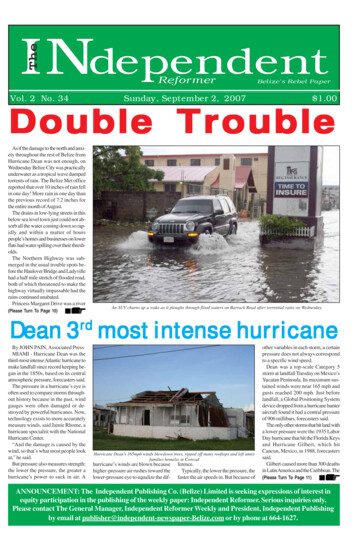
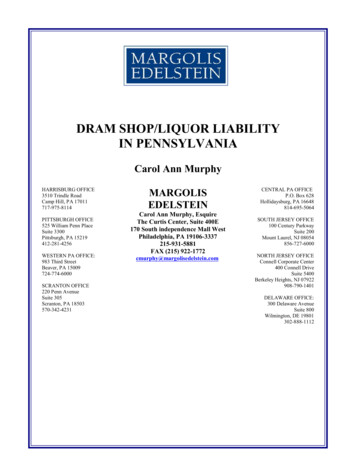
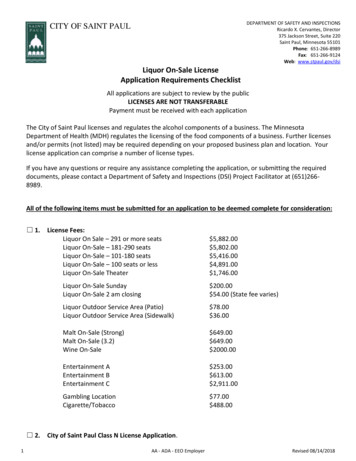

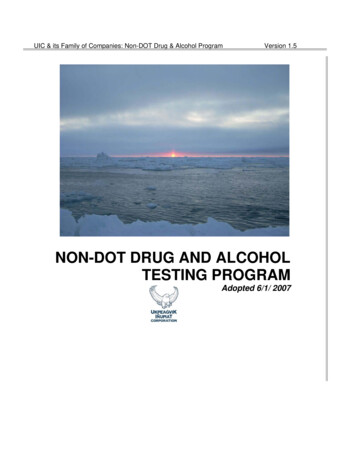

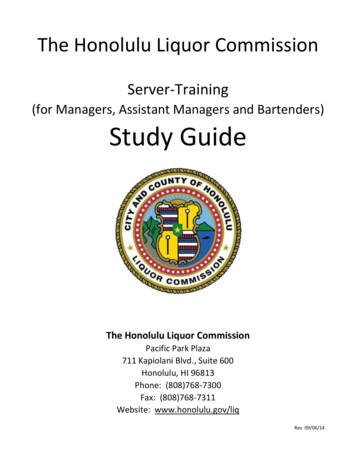
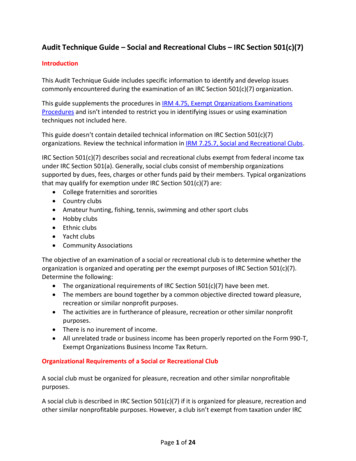
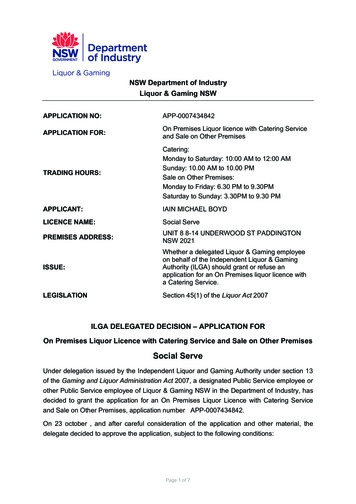

![Liquor Act [No. 59 of 2003] - Gov](/img/35/a59-03.jpg)